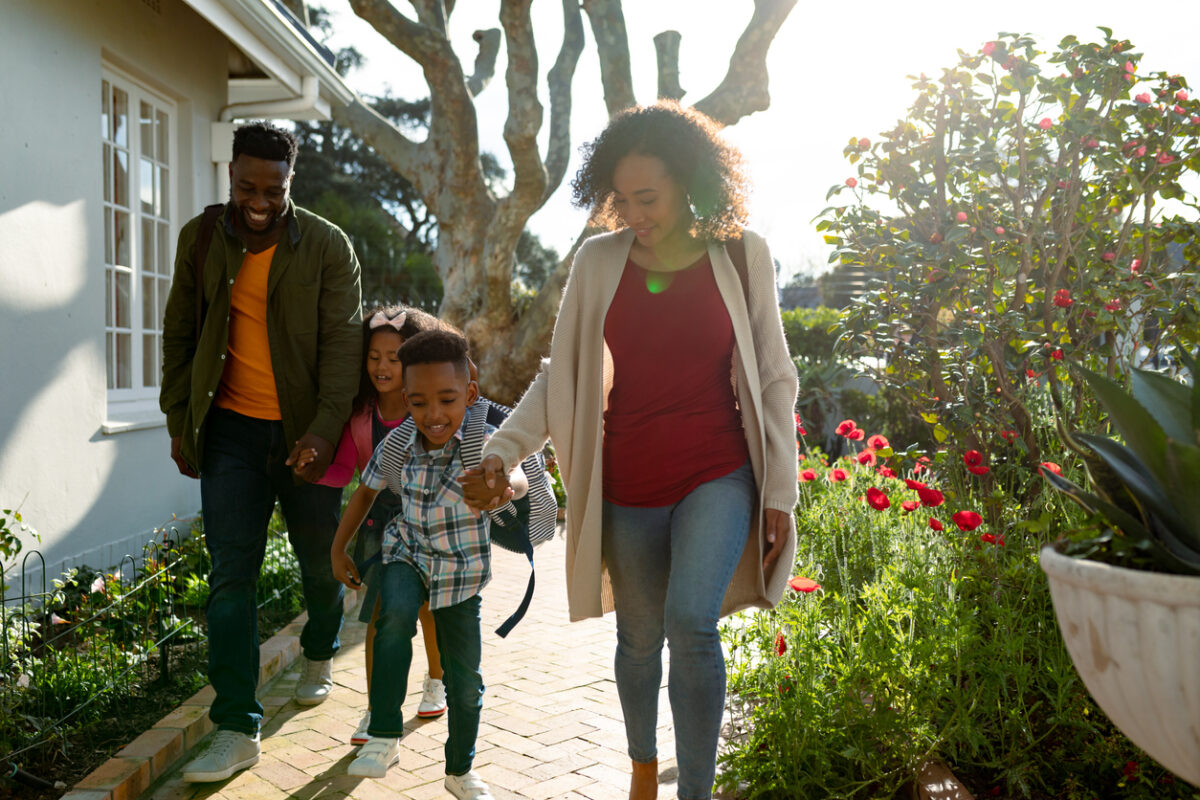

We may earn revenue from the products available on this page and participate in affiliate programs. Learn More ›
There are few things as satisfying as watching your garden change through the growing season and enjoying the literal fruits of your labor. Gardens take a lot of work and require consistent care and attention. And plants need help, even when you’re away.
But you still can get away for a vacation, provided you put some measures in place before leaving. Instead of letting your garden wither from neglect, implement these ways to keep your blooms and veggies going strong while you’re traveling on planes, trains, and automobiles.
1. Inspect and tidy up garden plants and beds.
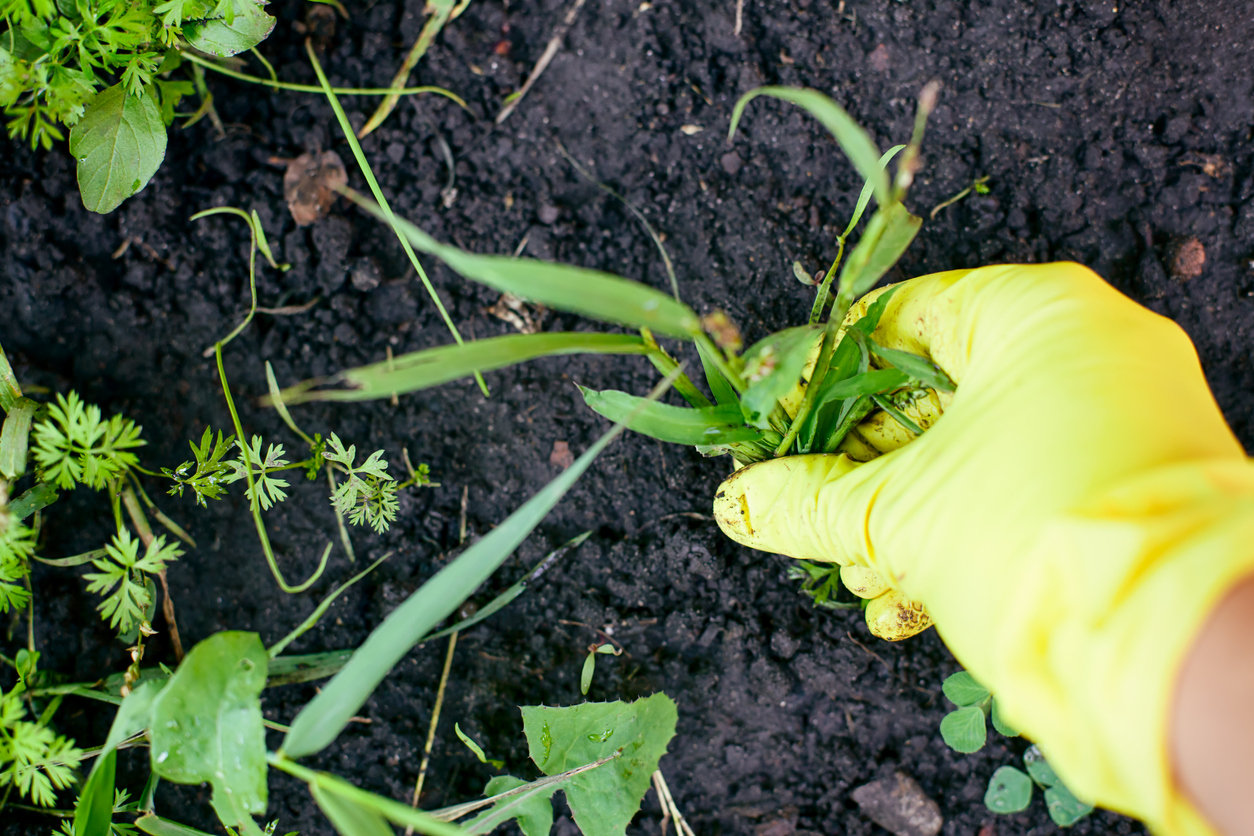
Before leaving on a trip, spend some time patrolling your garden. Pull weeds, deadhead blooms that are past their prime, and pick food that’s ripe. Tend to plants that show signs of aphids or other pests before leaving, and fertilize if plants lack vigor or are due for a fertilizer application while you’ll be away. If your garden plants are healthy when you leave, they’ll be better equipped to deal with a few days of stress or an altered care schedule.
2. Mulch around plants.
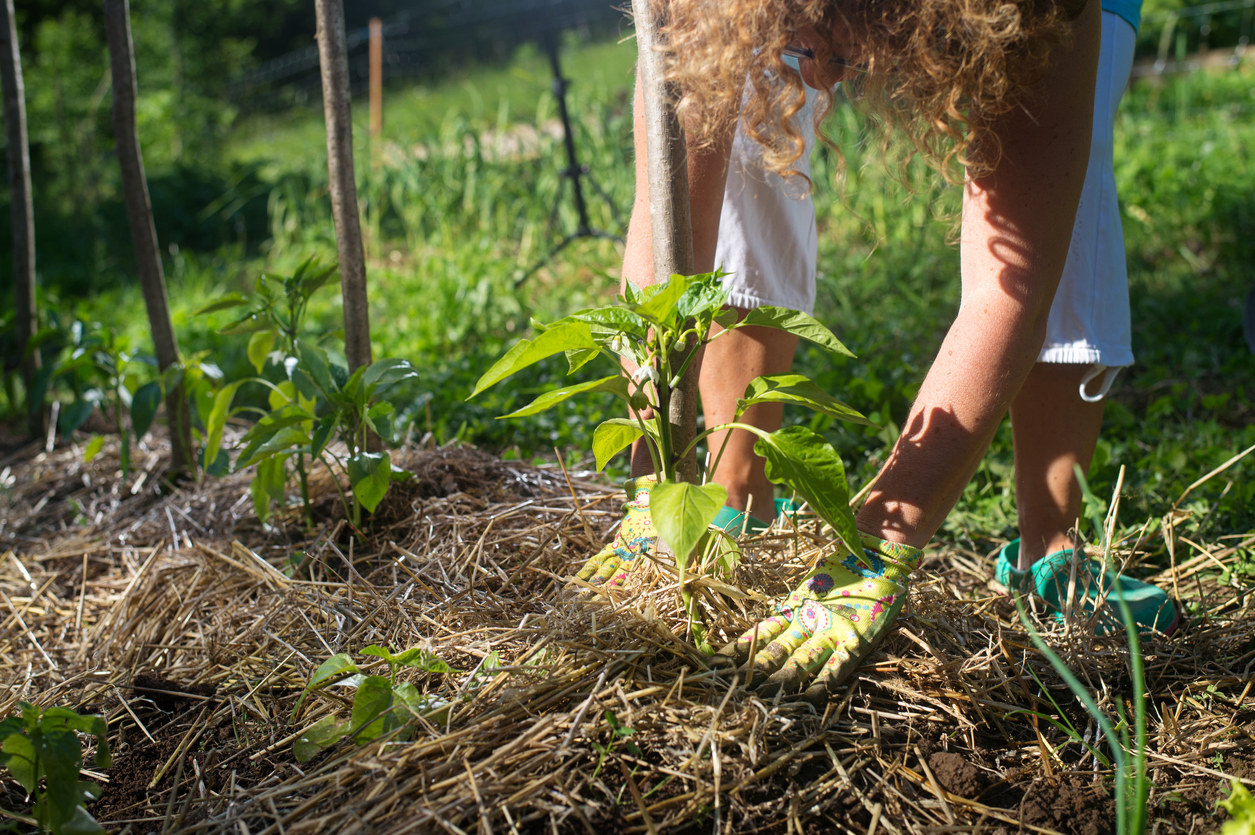
In general, the biggest issue gardeners face when going on vacation is helping the soil in the garden stay moist. Adding about 3 inches of garden mulch protects the soil from the sun, regulates soil temperature, and helps prevent excess evaporation. This is especially important for new plants or those most affected by hot temperatures.
There is, however, such a thing as too much mulch. It’s a material that slugs and snails seem to prefer due to its moisture. You can help deter these pests by not overdoing the mulch or the amount of moisture beneath. Also, don’t pile up mulch against the trunks of trees or main stems of shrubs.
3. Water deeply.
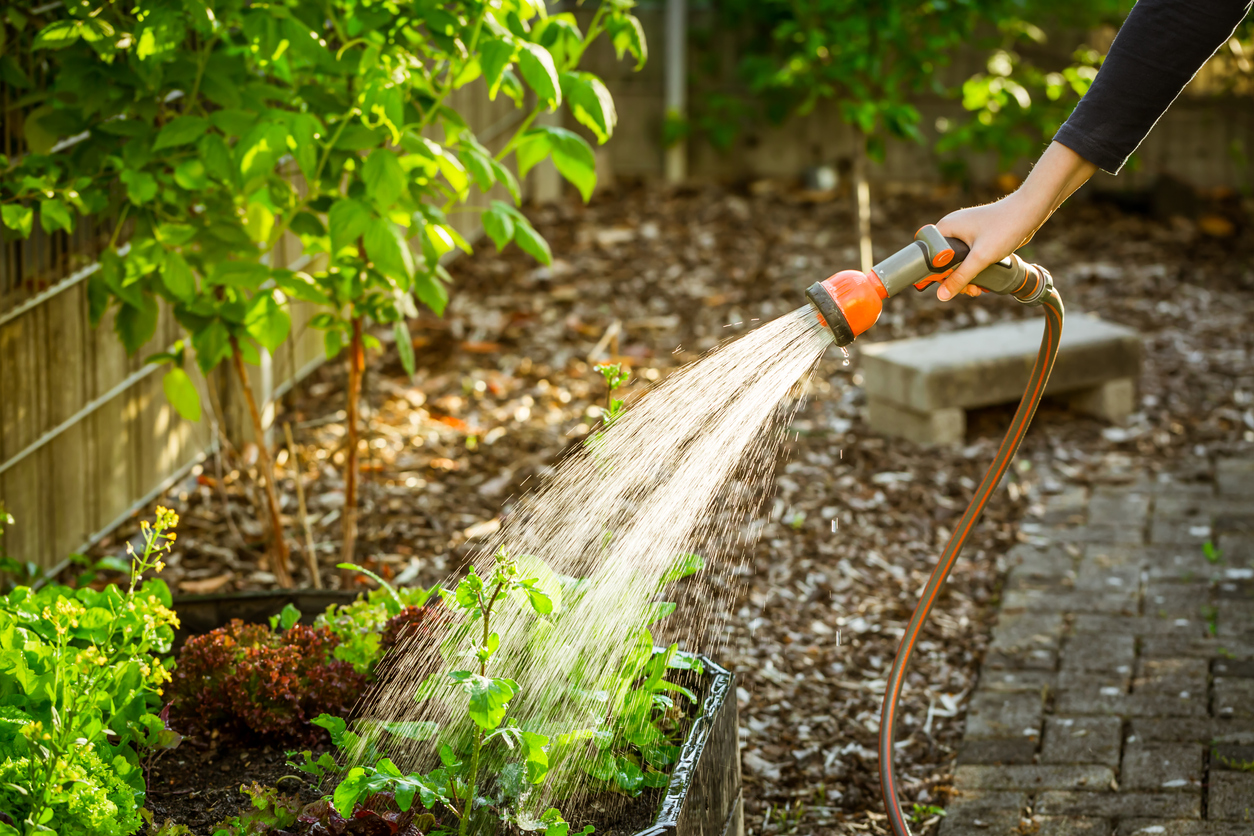
The last thing you should do before going away on vacation is to provide all of your plants with a deep watering with lawn sprinklers, drip irrigation, or a slow-flowing hose to help the plants’ roots grow deeper and stronger. Give your garden a deep watering of about 2 inches right before you leave. This might be all the water your plants will need if you’re away for just a weekend or a few days. If you’re away for longer, or if you’ll be gone during a heat wave, find additional watering methods or help to keep your plants irrigated.
4. Plan ahead so you don’t miss lawn care treatments.
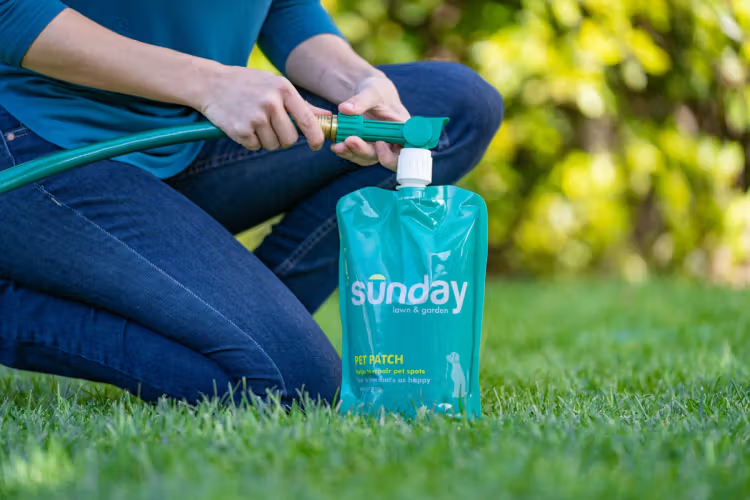
Though you may put a lot of time and effort into your lawn care regimen, there’s no reason you should have to change travel plans to accommodate it. Signing up for a custom lawn plan with Sunday Lawn Care ensures that you won’t have to skip any important steps while you’re away. After submitting a soil sample for analysis, Sunday tailors a custom plan to include the specific products your soil and plants need, and provides instructions on when and how to use its bio-based formulas.
The plan’s recommended lawn care products arrive automatically by season, so you don’t have to remember that it’s time to buy or apply nutrients to keep your grass green. Because you can check your plan in the Sunday app and get reminders with a suggested time frame for application, you can decide whether to complete an upcoming task before you leave for a trip or when you return. Plus, having pros select the best products for your lawn can keep it healthy all year long, so your turf can better weather a brief break in watering—or a little bit of neglect.
5. Set up timers for your hose or sprinkler.
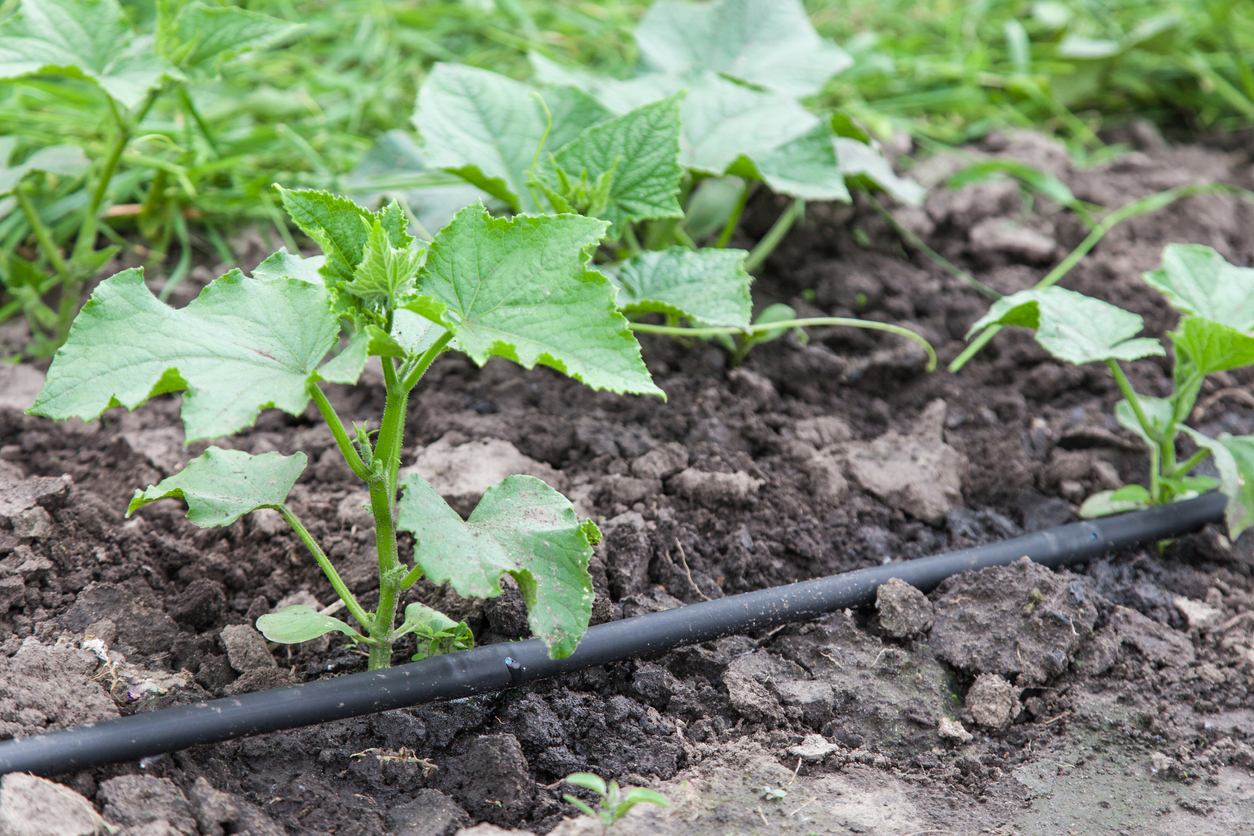
One sure way to get peace of mind when you’re on vacation is to install a sprinkler timer. Devices like the Gilmour Dual Outlet Electronic Water Timer can turn your hose or sprinkler on and off based on a schedule that you set up. This timer has two hose connections, so you can run more than one zone from your hose.
Pair the sprinkler timer with a drip hose (or other sprinkler device), such as the H2O Works Heavy Duty Flat Soaker Hose, which was rated the most durable in our guide to the best soaker hoses. Pairing the how with a timer can help ensure that every inch of your garden gets the water it needs while you’re away.
6. Implement pest control methods.
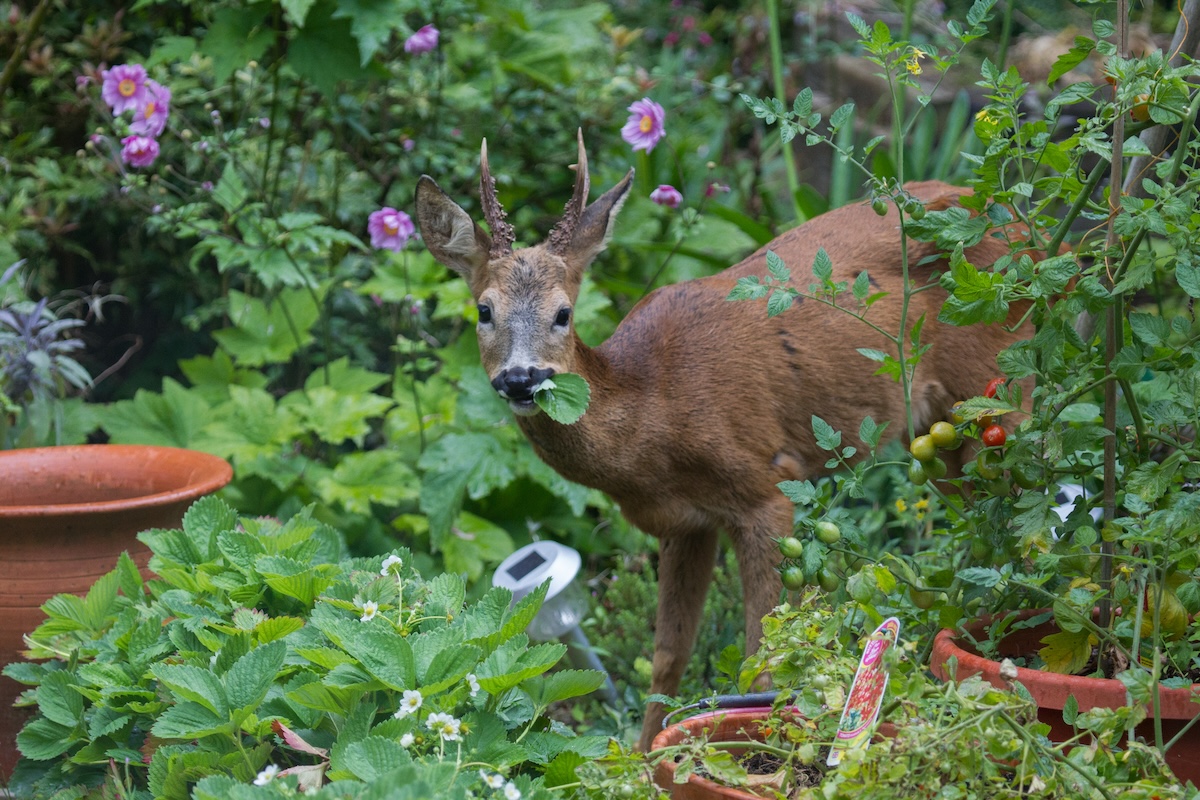
If you’ve been living in the same home for a while, you’re likely aware of which pests visit your garden. From insects to rodents to deer, plenty of creatures are interested in the contents of your garden beds. If you don’t take precautions against them, your garden might be ransacked by the time you come home from vacation.
One way to protect your garden is to set up motion-sensor lights or ultrasonic repellers. Some, like the NIKAND mole and gopher repellent, run on solar power. Other options include releasing beneficial insects like ladybugs to control aphids, surrounding your garden with mesh fencing to keep critters out, hanging fragrant soap among your plants to deter deer, or administering other pest control options well before you pack to leave.
7. Call in favors from neighbors.
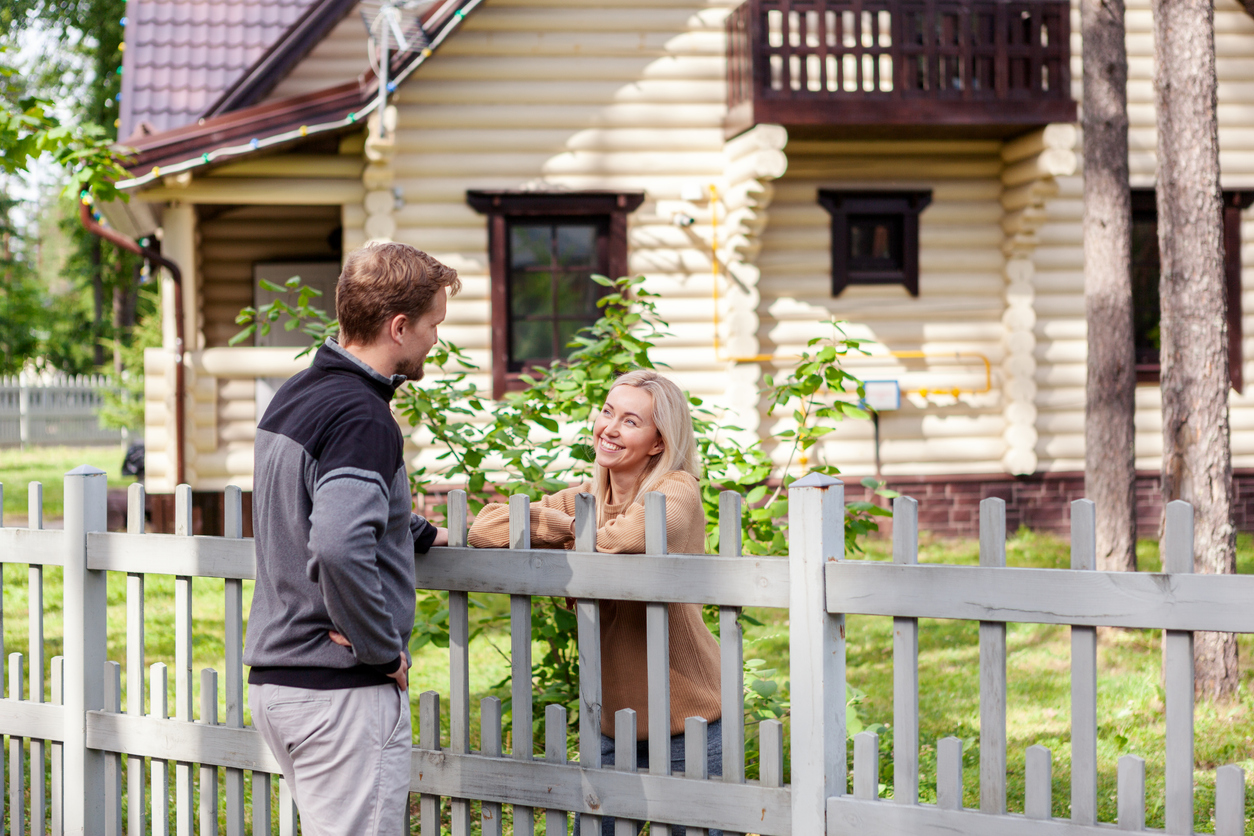
Partner up with other gardeners in your neighborhood and offer to tend to each other’s plants during vacations or business trips. Give them a tour of your garden beds, and provide written instructions for watering and plant care, including any deadheading or pest control your garden might require.
Depending on how long you will be away, offer your neighbors free rein to harvest any produce that ripens in your absence, and they’re likely to do the same when they go on vacation. Also, it’s always a nice gesture to bring them back a small thank-you gift so they’ll be happy to tend to your garden again in the future.
8. Group container plants in a shady area.
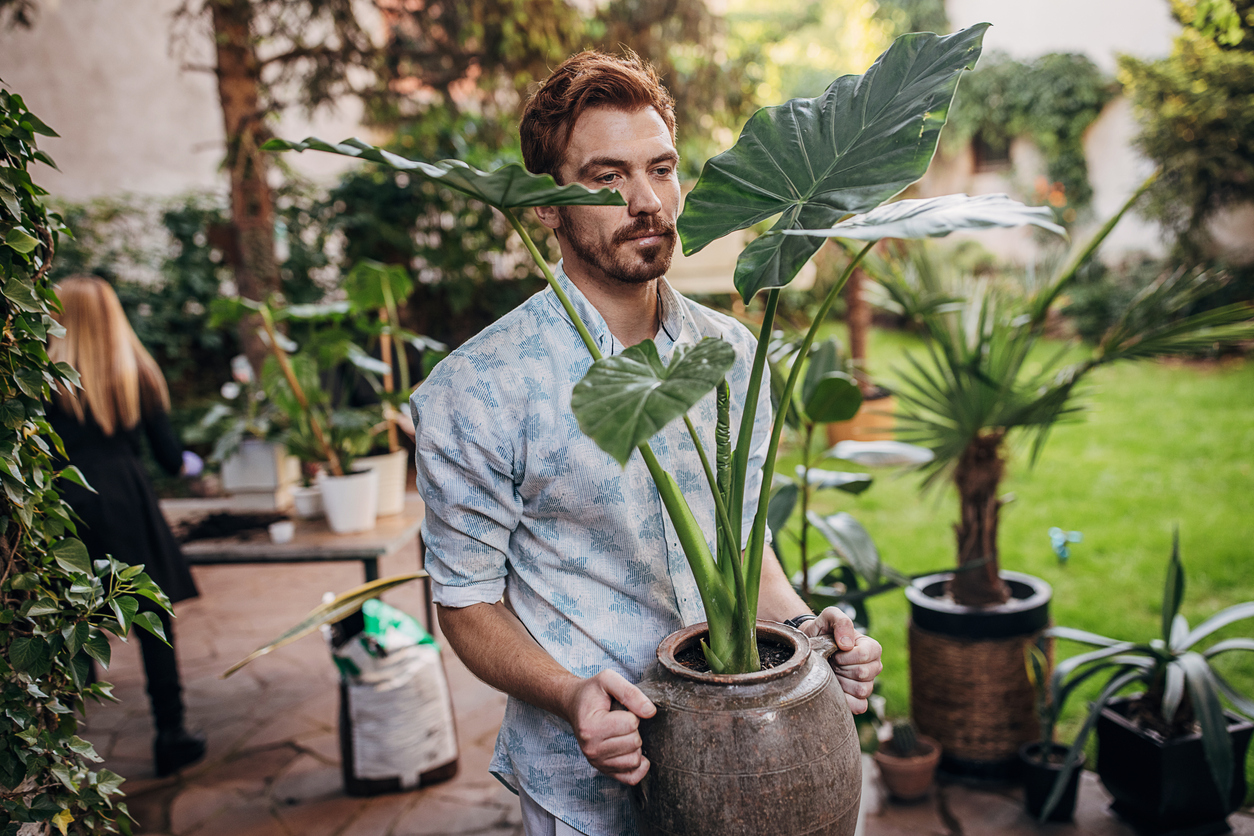
One great attribute of plant containers is their portability, but a drawback to container gardening is the speed at which containers dry out, which means they need frequent watering. If you have crops in pots, relocate them to a shadier area of your property and group them together so they experience less sun or heat stress while you’re away. Grouping pots near each other makes it easier for plant sitters to water them—plus, it creates a damper microclimate and reduces water loss. (It helps if you mulch the top of the potting soil, too.)
9. Install a temporary greenhouse.
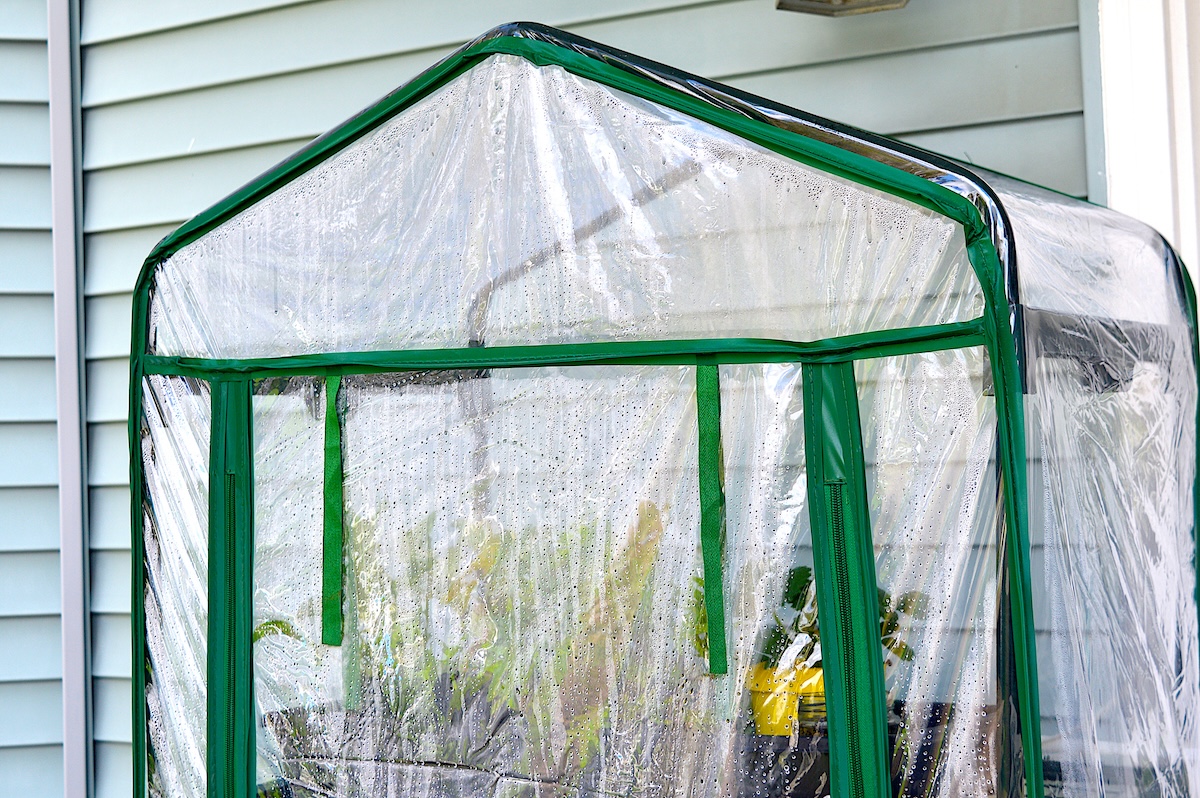
Greenhouses keep plants warm and help keep them moist by slowing evaporation. Even individual covers, such as plastic cloches, collect condensation, which then drips back into the soil. Some temporary covers can deter pests as well.
If you have some large, clear plastic bags and stakes, you can create a temporary DIY greenhouse. Cover a plant with a large, clear bag, making sure the plastic reaches the soil on all surrounding sides. Use the stakes to prevent the plastic from touching the plant; otherwise, the leaves can rot as condensation forms. If this seems like too much work, there are also options for sale, such as this mini pop-up greenhouse, the budget pick in our guide to the best compact greenhouses.
10. Stake and tie veggie plants.
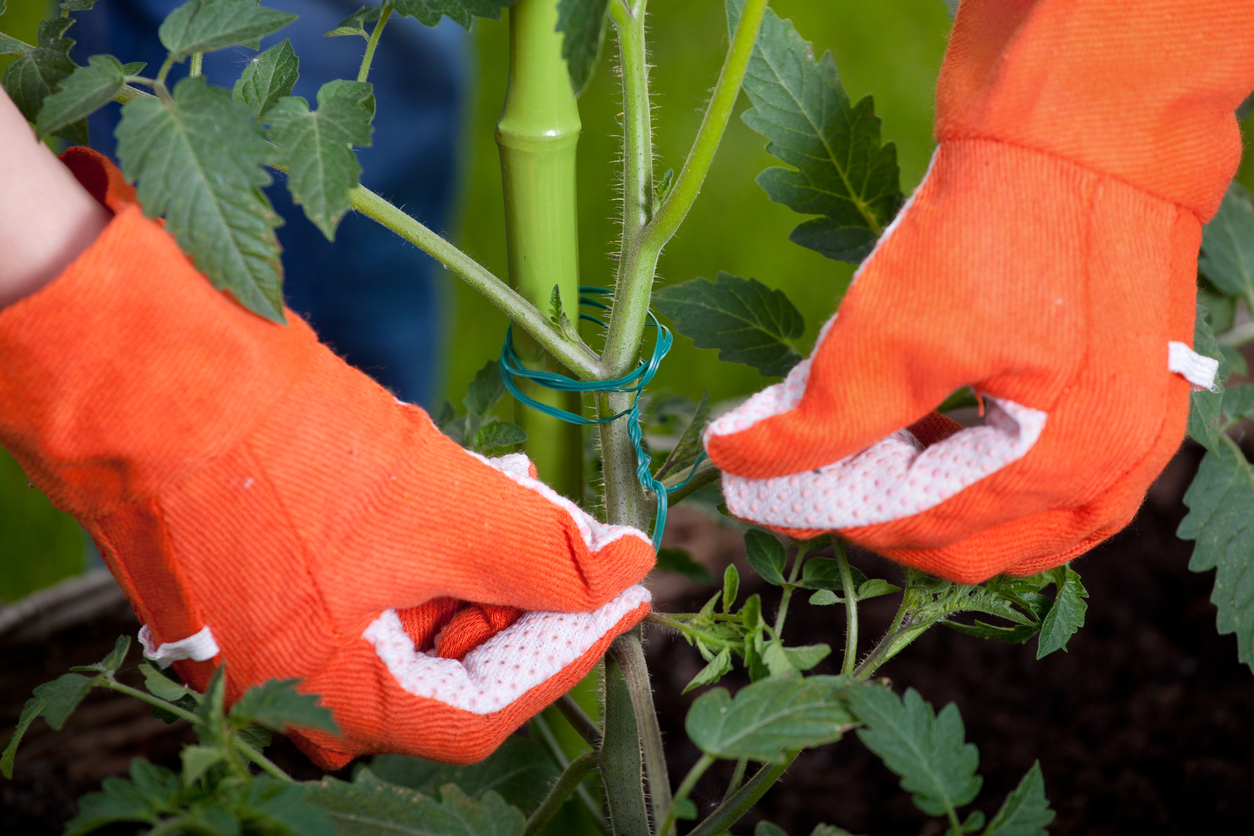
It seems like gardens explode with growth in the blink of an eye. Squash plants take over entire garden beds, while peas and tomato plants grow incredibly fast. Many other edible plants, like green beans or melons, need a little support for the fruit and veggies to mature.
Preemptively stake and loosely tie these types of plants before you go on vacation, even if they’re not yet big enough to climb the trellises you provide. It’s better to have these structures in place early than to come home to a garden bed of produce lying on the ground.
11. DIY, buy, or upcycle a water globe.
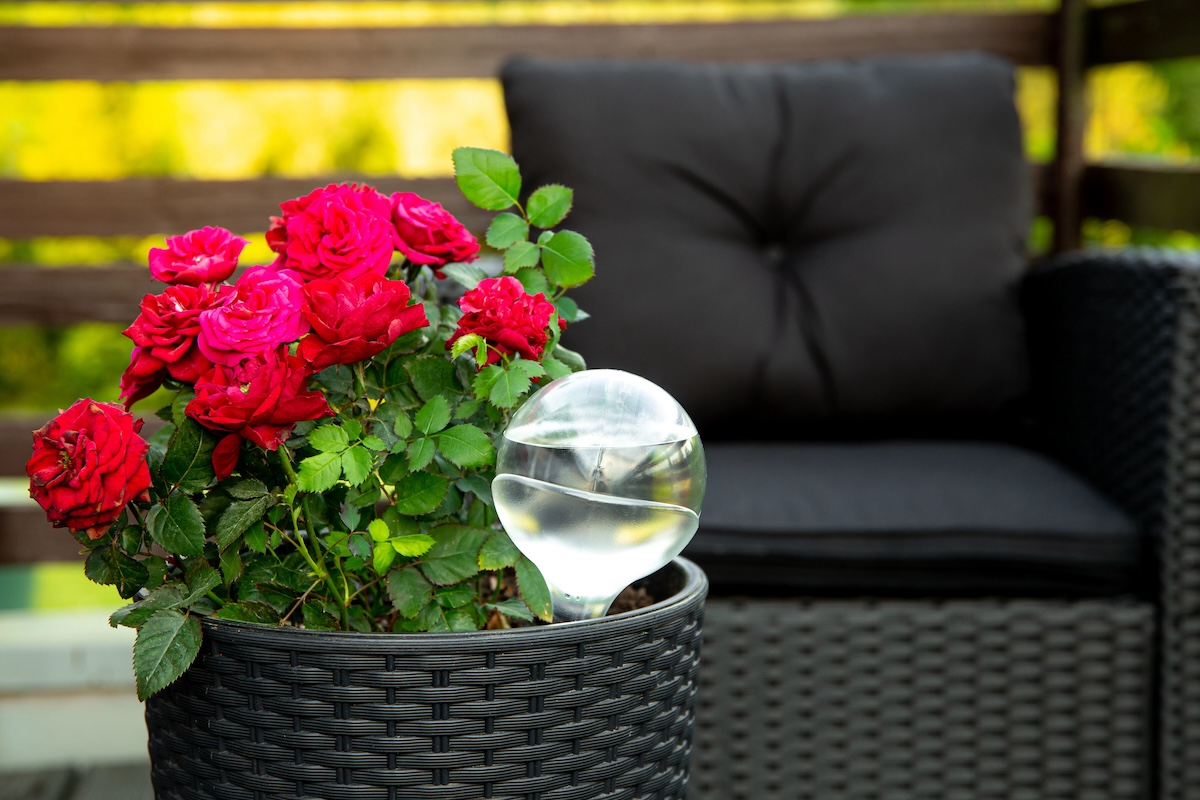
Water globes are containers with long, thin necks that you can fill with water. They’re easy to use: Fill them with water and invert them so the neck of the device goes into the soil and plunges deep enough for the globe to stay in place. The design uses physics, limiting the rate at which water leaves the globe while preventing air from entering. Depending on the size of the globe, type of soil, and type of plant, a water globe can provide water to plants for up to 2 weeks.
An easy DIY option is to use an empty wine bottle. Water your garden, then add one upside-down glass wine bottle full of water for every 4 to 6 square feet of your garden. No wine bottles? Try this Wyndham House water globe set instead.
12. Check the weather forecast—and take action.
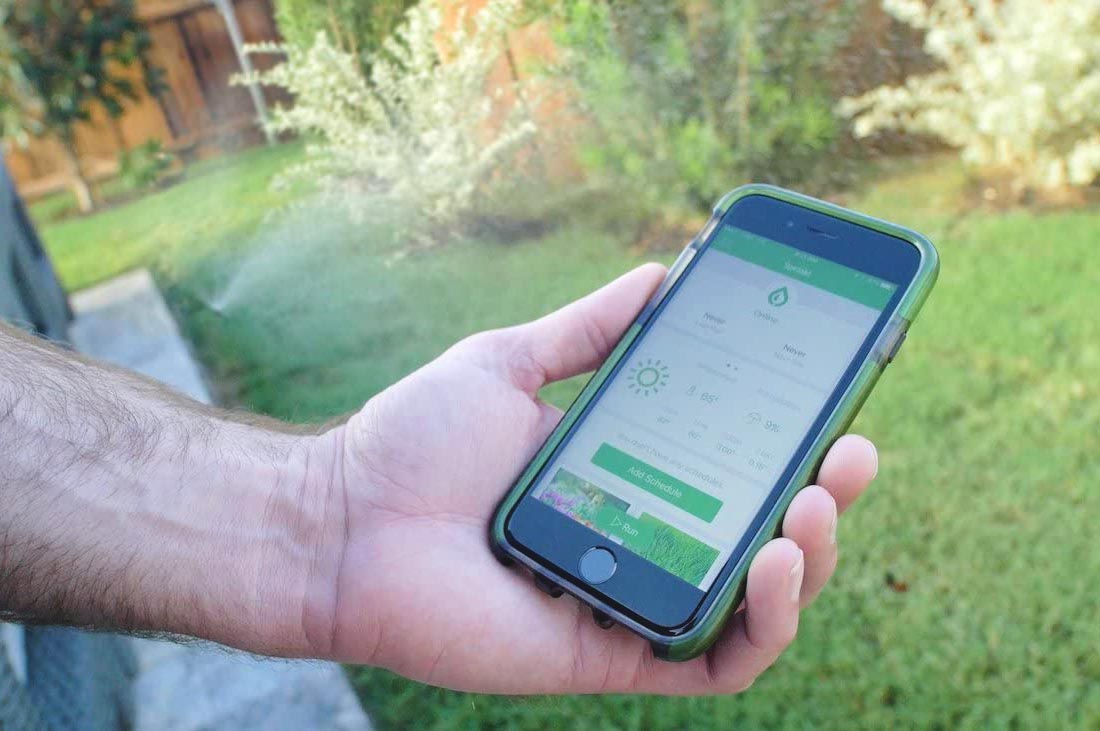
Unless you plan to be away for more than a week or two, you can get a good idea of what your garden will probably face during your absence by checking the weather. If a heat wave is in the forecast, for example, you might need to provide more shade for plants and increase watering frequency. Although you can never be sure of the weather, being aware of the forecast will help you prepare.
If you have a smart controller for your drip irrigation or sprinkler system, download it or update its app so you can control the system from wherever you are. Better yet, opt for a controller like the Rachio 3 Smart Sprinkler Controller, the top pick in our guide to the best smart sprinkler controllers. It will monitor local weather predictions and alter your watering schedule accordingly.
